Tire alignment, also known as wheel alignment, can help your tires perform properly and help them last longer. It can also improve handling and keep your vehicle from pulling in one direction or vibrating strangely on the road.
Alignment refers to an adjustment of a vehicle’s suspension – the system that connects a vehicle to its wheels. It is not an adjustment of the tires or wheels themselves. The key to proper alignment is adjusting the angles of the tires which affects how they make contact with the road.
There are a couple ways to tell if your car needs a tire alignment. If you've noticed one or more of these indicators, you should have your alignment checked by a licensed service technician immediately.
Uneven tread wear
Vehicle pulling to the left or right
Your steering wheel is off center when driving straight
Steering wheel vibration
When a technician checks your tire alignment, he or she is mainly concerned with three things:
This is the inward or outward angle of the tire when viewed from the front of the vehicle. Too much inward or outward tilt, also known as negative and positive camber, respectively, indicates improper alignment and will need to be adjusted. Worn bearings, ball joints, and other wheel-suspension parts may contribute to camber misalignment.
Distinct from camber alignment, toe alignment is the extent to which your tires turn inward or outward when viewed from above. If that’s confusing, just stand up and look down at your feet. Angle them inward toward the center of your body. When the tires on your car are angled the same way (remember, we’re thinking in terms of birds-eye-view), we call this toe-in alignment. Angle your feet outward and you have toe-out alignment. Both require adjustment.
Your caster angle helps balance steering, stability, and cornering. Specifically, it’s the angle of your steering axis when viewed from the side of your vehicle. If you have positive caster, the steering axis will tilt toward the driver. Negative caster, on the other hand, means the steering axis tilts toward the front of your vehicle.
If you have positive caster, the steering axis will tilt toward the driver. Negative caster, on the other hand, means the steering axis tilts toward the front of your vehicle.
Improper wheel or tire alignment can cause your tires to wear unevenly and prematurely. Here are some specific types of undue tread wear attributable to misalignment:
Tires are “feathered” when the tread is smooth on one side and sharp on another. This is usually a sign of poor toe alignment.
This strain of tread wear means the inside or outside of the tread is significantly more worn than the center of the tread. As its name implies, positive or negative camber causes this type of wear.
This happens when one side of your tread blocks wears down more quickly than the other in a circumferential direction. When you run your hand over the tread, it will look and feel like saw teeth when viewed from the side. Heel/toe wear could be a sign of under inflation and/or lack of rotation.
Heel/toe wear could be a sign of under inflation and/or lack of rotation.
If you’re experiencing any of these unusual wear patterns, you should have a technician check your alignment. While tire wear prevention is a good reason to keep your wheel alignment in check, the consequences of misalignment can also play out in overall vehicle performance. A car that pulls to one side or steers erratically, for example, probably has an alignment problem.
Distinct from tire alignment, tire or wheel balancing refers to compensation for any weight imbalances in the tire/wheel combination and is often performed in conjunction with wheel alignment. There are two basic types of tire/wheel imbalance that need correction – static (single plane) and dynamic (dual plane).
Static balance addresses balance on only one plane – vertical movement which can cause vibration. A dynamic imbalance, on the other hand, addresses balance in two planes – vertical movement and lateral movement .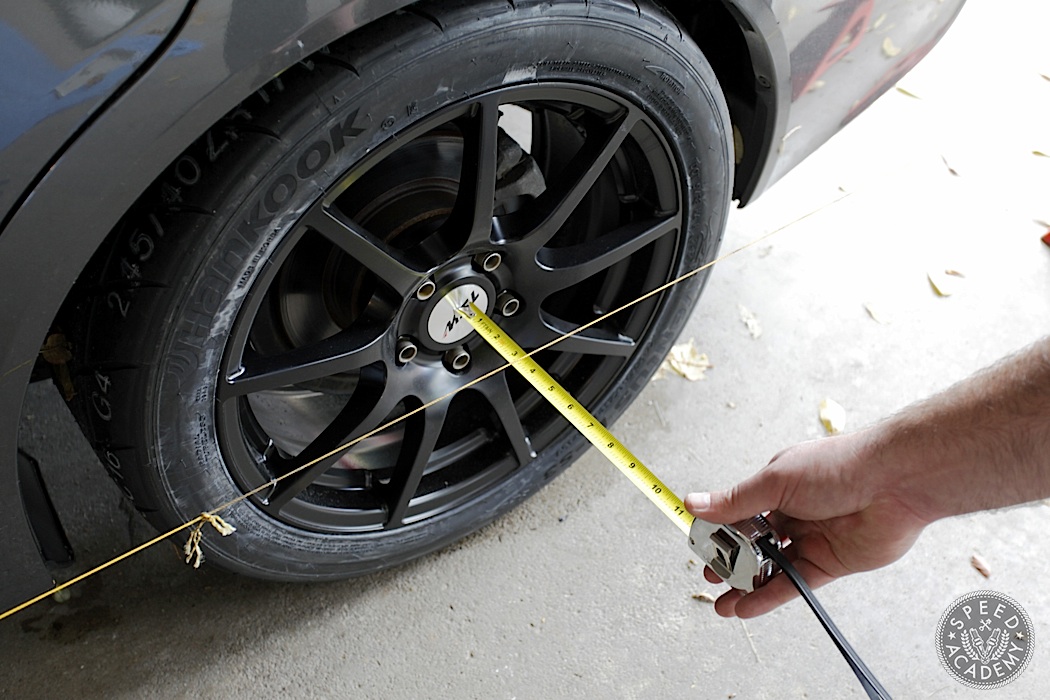 Both types of imbalance require the use of a special balancing machine to help even things out.
Both types of imbalance require the use of a special balancing machine to help even things out.
To begin balancing your tires, a technician will mount them on the correct rims and adjust the pressure to optimal inflation. Then each tire goes on the center bore of a balancing machine. The machine spins the tire at a high speed to measure the wheel/tire combination imbalance. It signals how much weight the tech should add to balance out the tire and the areas where said weight is needed.
Tire balancing is essential for proper tire care for the same reason as wheel alignment: prevention of premature tread wear. Having tires aligned and balanced every 5,000 to 6,000 miles can help maximize their lifespan and overall performance.
Uneven tire wear… check. Car pulling to one side… check. Steering wheel is crooked when you are driving straight… check. Its official, your car needs an alignment.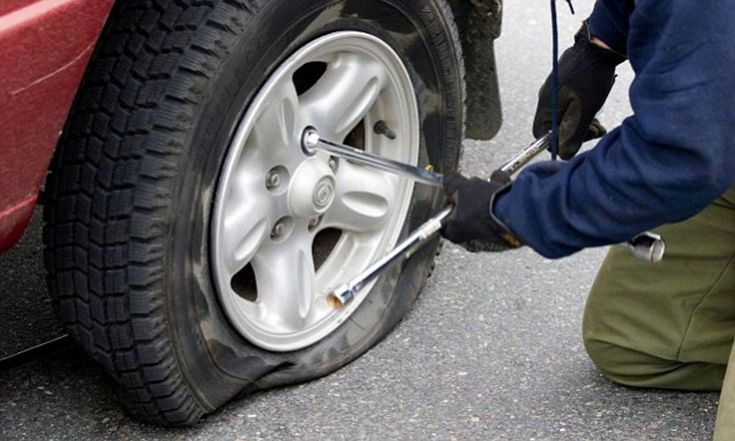 This isn’t something to put off – your car’s performance won’t improve on its own.
This isn’t something to put off – your car’s performance won’t improve on its own.
Continuing to drive will only make the condition of your tires and the steering and handling of your vehicle progressively worse. Call your mechanic today to schedule an alignment and read on to learn what goes into an alignment. To learn more about the symptoms of bad alignment, check out this article.
A common cause for your vehicle coming out of alignment is the dreaded pothole. If you hit a particularly large pothole, there is a possibility for damage to occur to your car. Alignment problems can also arise if you hit a curb or other obstruction in the road.
An alignment is a procedure performed by your mechanic to get your vehicle’s suspension back into proper form. By making adjustments to the vehicle’s tires and axles, the wheels are once again aligned with each other and can make solid contact with the road.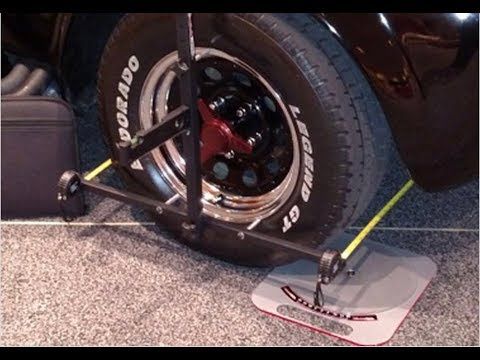
Your mechanic will likely raise your car up on a hoist and use an alignment machine that has devices that clamp to the wheels. The machine is hooked up to a computer and your mechanic makes precise adjustments to a series of measurements to get everything perfectly aligned.
There are three main types of alignments available – front-end, thrust and four-wheel. The type of suspension that your vehicle has determines what kind of alignment your car will receive. Your mechanic will be able to recommend the right alignment type for your vehicle.
A front-end alignment makes adjustments to the front axle. This is the most basic type of alignment and is not always recommended for modern vehicles.
A thrust alignment combines a front-end alignment with a thrust alignment to ensure all four wheels are squared with one another. This type of alignment is usually recommended for vehicles with a solid rear axle.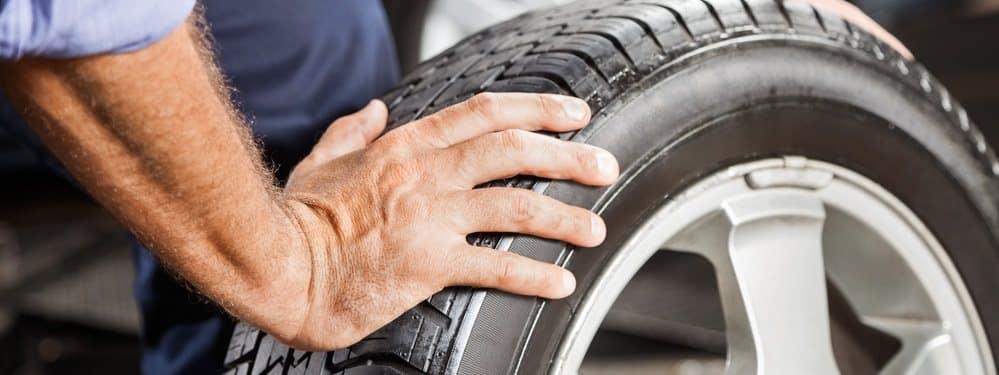
This comprehensive alignment combines elements of the front-end and thrust-angle alignments and also positions the rear axle angles. A four-wheel alignment is typically for four-wheel and all-wheel drive vehicles and front-wheel drive cars with adjustable/independent rear suspensions.
 There are four main areas that your mechanic will be adjusting: toe, camber, caster and thrust.
There are four main areas that your mechanic will be adjusting: toe, camber, caster and thrust.The angle at which the tires turn in or out when viewed from above. Proper toe is crucial for even tire wear and extended life of your tires.
The vertical angle – inward or outward – of the tires when looking at the vehicle straight on. Many vehicles have a slight negative camber to aid in stability.
The forward or backward angle of the steering axis as viewed from the side of the car. Caster helps your vehicle stay on a straight course and aids in your steering wheel returning to a straight position after a turn.
This measurement compares the rear axle direction and the centerline of the car. It also looks at the wheelbase and makes sure that the front and rear axles are parallel.
5. Next, your mechanic will ensure that the steering wheel is centered.
6. A test drive is performed to ensure that all issues have been addressed and everything is back in alignment.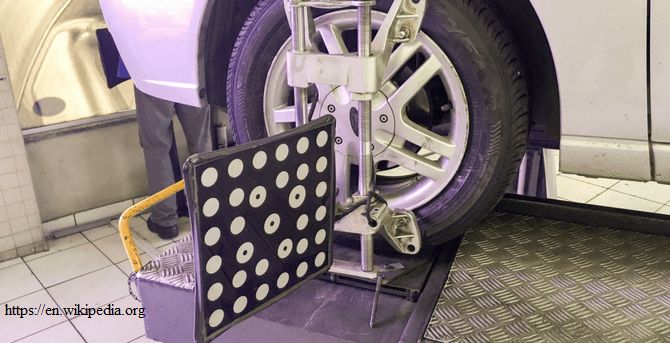
Learn more about premium steering and suspension parts, find your car part, or find where to buy your auto part today.
The content contained in this article is for informational purposes only and should not be used in lieu of seeking professional advice from a certified technician or mechanic. We encourage you to consult with a certified technician or mechanic if you have specific questions or concerns relating to any of the topics covered herein. Under no circumstances will we be liable for any loss or damage caused by your reliance on any content.
The choice of tires, tires and their installation is the key to the comfort and safety of your vehicle (V). If you let at least one of the steps go by itself, the car will lose ease of control, it will become difficult to enter turns, third-party sounds will appear in the cabin, and tires may wear out ahead of time. What to do with it? Let's deal with the issues of self-adjusting the camber-toe angles (RS) of the front and rear wheels together.
What to do with it? Let's deal with the issues of self-adjusting the camber-toe angles (RS) of the front and rear wheels together.
We recommend that you test all parts of the suspension and steering system after replacement of components, an accident or related problems. This will help save time, money and nerve cells, as well as not become a regular visitor to the nearest car dealership due to savings on diagnostics.
Adjustment will help you check and, if necessary, correct the position of the tires relative to the road and each other. RS indicators are expressed in degrees, minutes, millimeters and are set by the car manufacturer separately for each model. The exact figures that are relevant specifically for your vehicle can be found on the Internet.
There are three main CCCs:
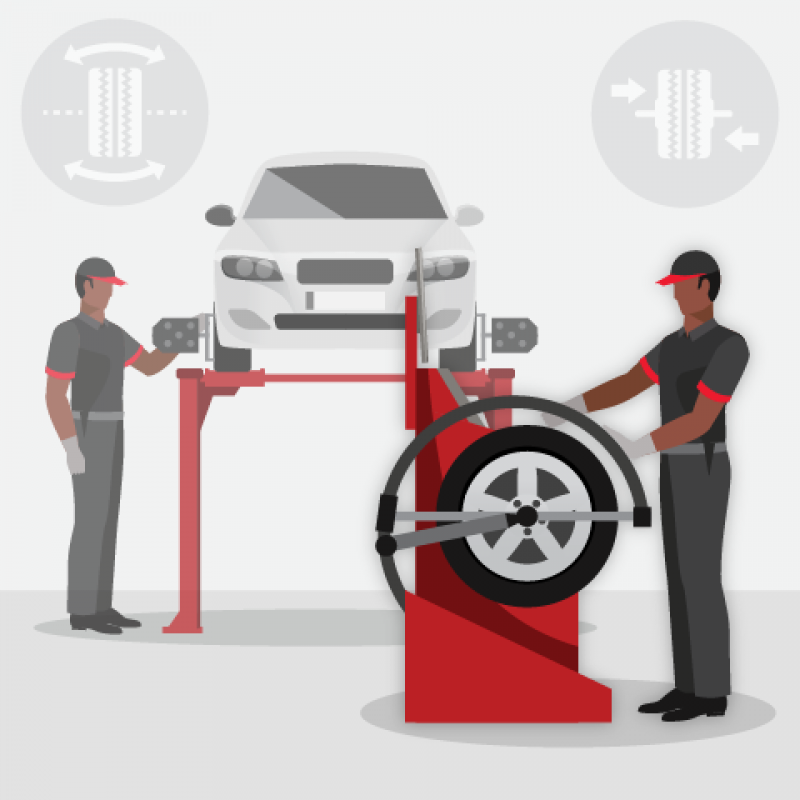 With a strong violation, this is noticeable and visual. Proper adjustment will allow you to achieve comfort, safety and easy handling of the car.
With a strong violation, this is noticeable and visual. Proper adjustment will allow you to achieve comfort, safety and easy handling of the car.
There is one more concept - axis reversal. This is one of the options for incorrect convergence. It lies in the fact that a pair of tires, often rear, with a flat steering wheel, synchronously “looks” not directly, but to one of the sides. Of course, handling suffers because of this and the car can significantly "drive" on the road. Here is what the problem looks like when viewed from above:
Of course, handling suffers because of this and the car can significantly "drive" on the road. Here is what the problem looks like when viewed from above:
Now that we have figured out what RS is, we will explain why the verification procedure needs to be carried out regularly, and also consider what the consequences can be if this is forgotten.
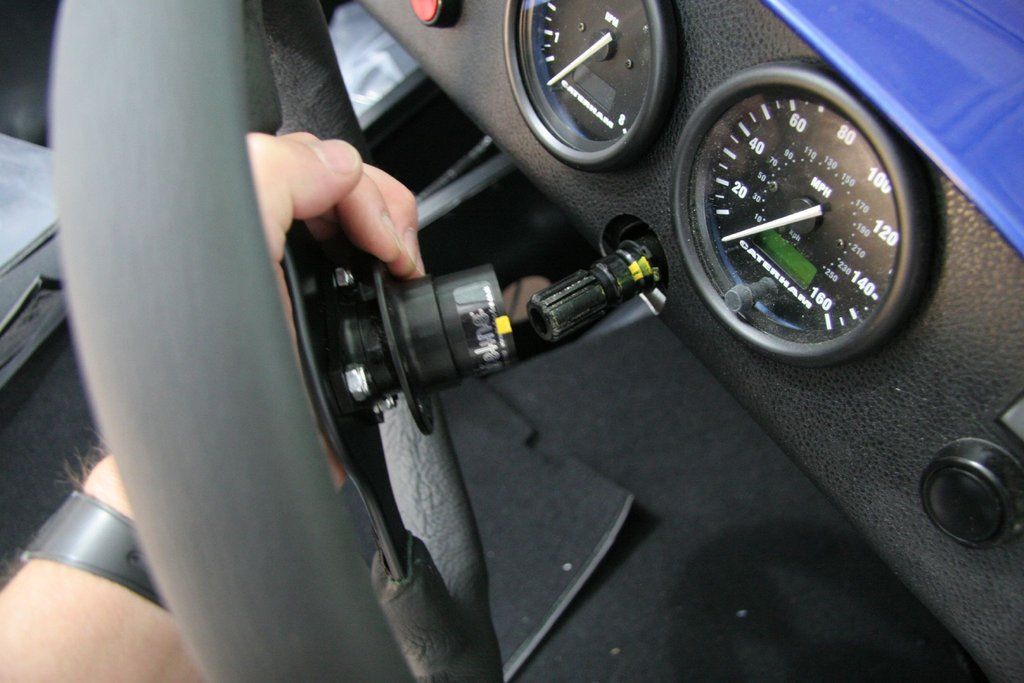 One of them is tire wear. To eliminate this and not to call in once again to the service station, you can look at the wear indicators on the tire. Sometimes it's about balancing, and you can fix the situation with a few weights. But in any case, there is only one way for your car - to tire fitting.
One of them is tire wear. To eliminate this and not to call in once again to the service station, you can look at the wear indicators on the tire. Sometimes it's about balancing, and you can fix the situation with a few weights. But in any case, there is only one way for your car - to tire fitting. 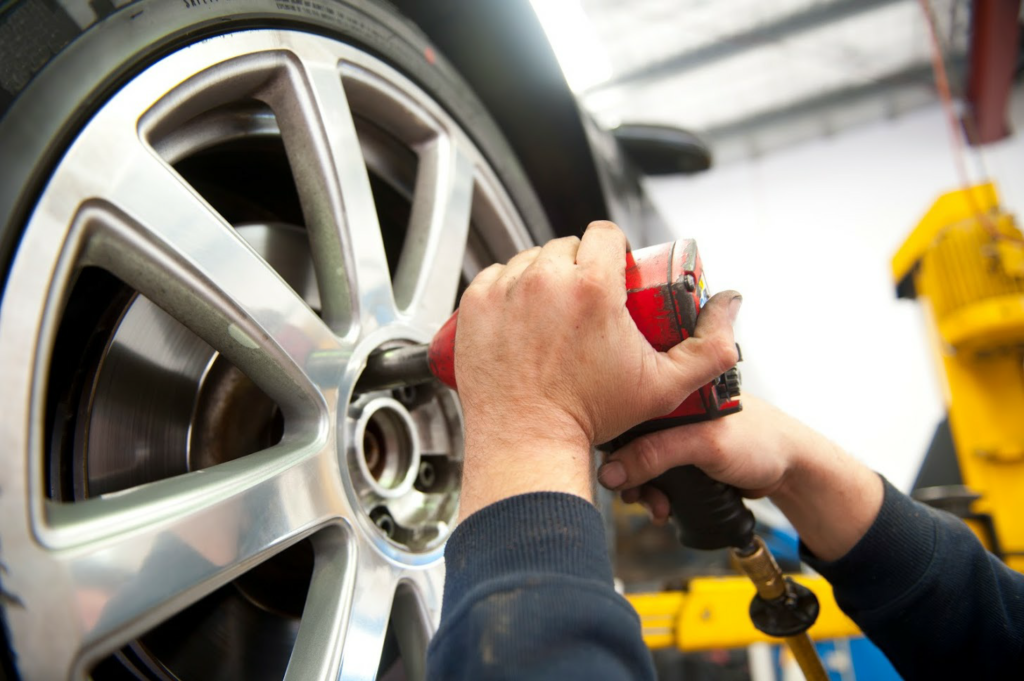
Any steering problems require an urgent visit to the service station, diagnostics and front camber adjustment, if the problem is not something else.
Many specialists who want not only to help you with the problem, but also to earn money, offer to carry out additional useless procedures. These often include the adjustment of the RS. If you are not sure about the need for the assigned services and do not know when you can refuse and not adjust the wheel alignment, remember:
These often include the adjustment of the RS. If you are not sure about the need for the assigned services and do not know when you can refuse and not adjust the wheel alignment, remember:
Don't be fooled by the tricks of car service employees and avoid wasting money. It is better not to skip scheduled diagnostics, be observed by trusted mechanics and get rid of problems immediately.
You can go one of two ways:
 In addition, some cars, including trucks, are very difficult to maintain on their own. The main plus: it's free. Accuracy can be good with the knowledge of the case, but not perfect, like a professional.
In addition, some cars, including trucks, are very difficult to maintain on their own. The main plus: it's free. Accuracy can be good with the knowledge of the case, but not perfect, like a professional. Most motorists know how a vehicle behaves with correctly calculated wheel alignment.
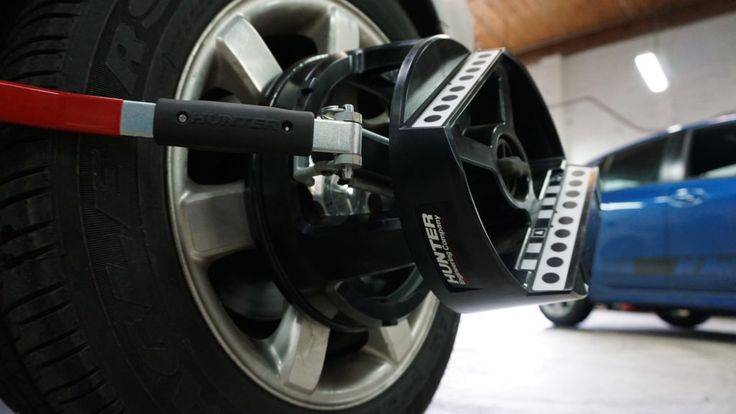
Regularly carrying out the procedure allows, firstly, to save money, and secondly, increases driving safety.
In many salons, the procedure has long been computerized, so you can not talk about the accuracy of the results - this is the main plus. We also note:
The main disadvantage is the following: they rarely come to the service station just for the alignment adjustment procedure.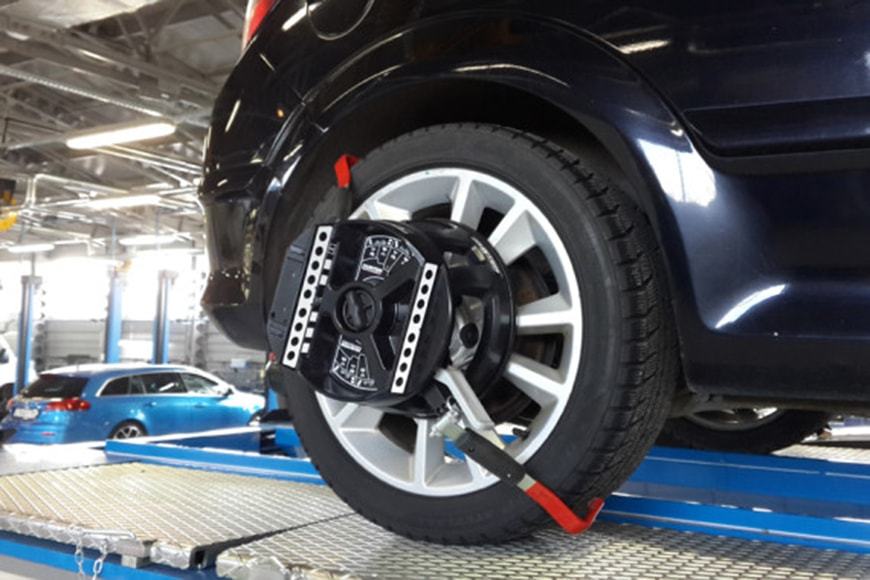 Usually it is offered or even imposed by repairmen, claiming that the car will fall in half at the first turn of the steering wheel. But sometimes it is worth listening to the recommendation, especially if you have not carried out a scheduled inspection for a long time. It is recommended to do it at least once every 30 thousand kilometers.
Usually it is offered or even imposed by repairmen, claiming that the car will fall in half at the first turn of the steering wheel. But sometimes it is worth listening to the recommendation, especially if you have not carried out a scheduled inspection for a long time. It is recommended to do it at least once every 30 thousand kilometers.
Self-taught, of course, can carry out the procedure as well as specialists, especially if you have all the tools, experience and knowledge on the topic in stock. But without skills, you will only harm the transport and spend even more money on its restoration. There are many disadvantages of self-repair:
 Without knowing this, you can “reset” all indicators, which will negatively affect driving performance.
Without knowing this, you can “reset” all indicators, which will negatively affect driving performance. The main and, perhaps, the only plus of this option is that it is free.
Indirect causes may be:
After getting into any of these situations, the car may break down, in which it is not recommended to go even to the service station.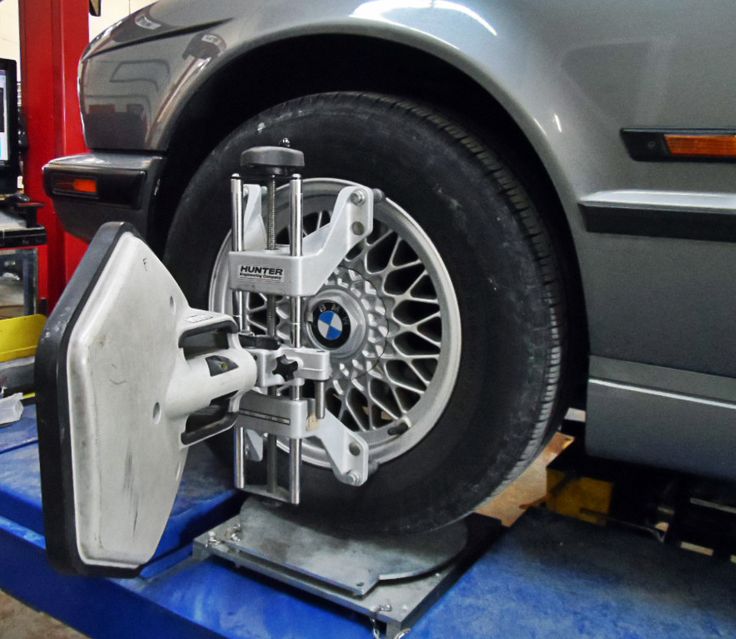 Otherwise, we recommend regular preventive checks. Best of all - twice a year, because all parts of the nodes wear out naturally and gradually become unusable. Due to the constant vibration, the UUK can arbitrarily deviate.
Otherwise, we recommend regular preventive checks. Best of all - twice a year, because all parts of the nodes wear out naturally and gradually become unusable. Due to the constant vibration, the UUK can arbitrarily deviate.
Even a professional and experienced car mechanic is not always able to set the angles recommended by the manufacturer. This can be prevented by parts that are already worn out and need to be replaced. Their use in the car leads to backlash. It is for this reason that any good master does not take up the alignment of the geometry before he at least conducts a visual inspection of the entire chassis.
Another possible explanation is different body deformations. This is caused by strong corrosion processes on the body, the consequences of an accident that appeared during the operation of a dent.
There is also a nuance that you can even check on your own - these are car tires. They often show uneven wear, bulging, or balance problems. You can correct the situation after a complete replacement of the wheels, or at least their rearrangement. As a result, the car will stop driving or take it away in the other direction. In the latter case, there is only one way out - SRT.
They often show uneven wear, bulging, or balance problems. You can correct the situation after a complete replacement of the wheels, or at least their rearrangement. As a result, the car will stop driving or take it away in the other direction. In the latter case, there is only one way out - SRT.
Here are some recommendations:
Sometimes the angles change the set position literally the day after the adjustment. Motorists find such explanations:
Once again, we give advice: check the entire chassis in the complex, and not just the PC indicator. Or contact the specialists, such mistakes are not allowed in the salons.
Do the following:
 5 meters back and back.
5 meters back and back. Procedure:
Let's watch a video in which there is a detailed description of all processes:
The further technology advances, the more devices are created to quickly and accurately check the technical condition of the vehicle. Consider the most popular and effective of them.
The first method that allows you to project the position of tires on the screen and diagnose wheel alignment. To do this, special tubes are attached to the rubber, emitting light beams. There is only one problem - the option is only suitable for diagnosing the front axle.
To do this, special tubes are attached to the rubber, emitting light beams. There is only one problem - the option is only suitable for diagnosing the front axle.
The laser allows you to get more accurate results and check the condition of the UUK of each part of the suspension. But this system is also a bit of a thing of the past, because it is replaced by the next view.
Here digital sensors are used instead of obsolete emitters for analysis. The received information is automatically systematized and displayed on the screen in the form of diagrams and diagrams. There are several types of stands:
They differ in the way data is transferred and processed.
The software can track wheel movement points, analyze them and compare them with a reference model.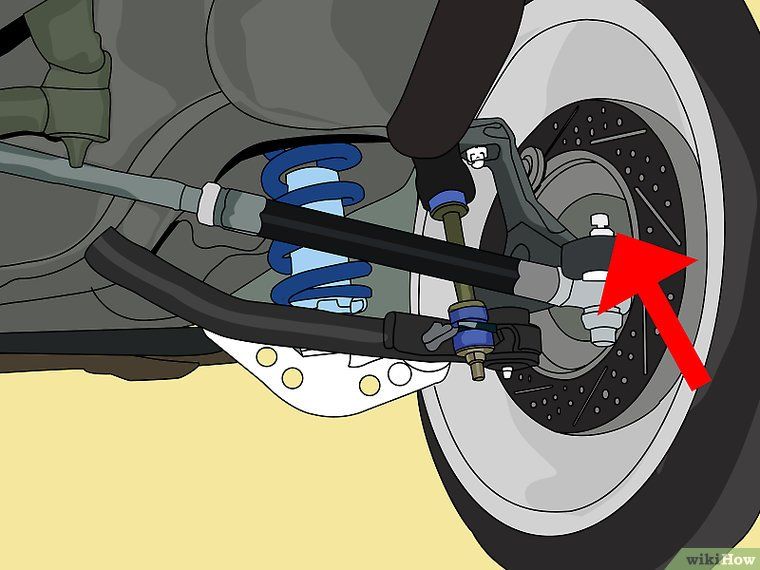 This allows you to quickly and correctly set the corners.
This allows you to quickly and correctly set the corners.
In the article, we have discussed how to do wheel alignment correctly, and now you know everything you need to carry out the procedure yourself and will be able to check the results after contacting the service station. Recall that the indicators directly depend on the wear of tires. If the rubber has already worn out, order high-quality tires for trucks in the online store vezikolesa.ru.
Material worked on:
Mikhail Rudnev
Auto mechanic
Author: Oleg Polazhinets
Surely you have come across the fact that the car moves to the side when the steering wheel is released, or someone from your acquaintances complained that “it’s time for me to go and check the collapse”, although this was categorically wrong. What people commonly call “alignment” is measuring and setting the wheel alignment angles. Moreover, in addition to the camber angle itself and the convergence angle, there is also a third angle, no less important.
What people commonly call “alignment” is measuring and setting the wheel alignment angles. Moreover, in addition to the camber angle itself and the convergence angle, there is also a third angle, no less important.
To improve stability and handling, each automaker provides for a particular car model a certain position of the front (and rear) wheels relative to each other and the road plane. The parameters of camber, convergence and caster are usually called wheel alignment angles.
Camber is understood as the angle of inclination of the wheels in relation to a perpendicular plane (in the usual case, to the road). With a negative camber, the wheels visually become like a "house", with a positive camber angle, the upper part of the wheel leans outward relative to the lower one.
With negative camber (left) the wheels are "house" With negative camber (left) the wheels are "house"
Toe is the sum of the angles between the plane that passes through the centers of the wheels and the longitudinal axis of the car.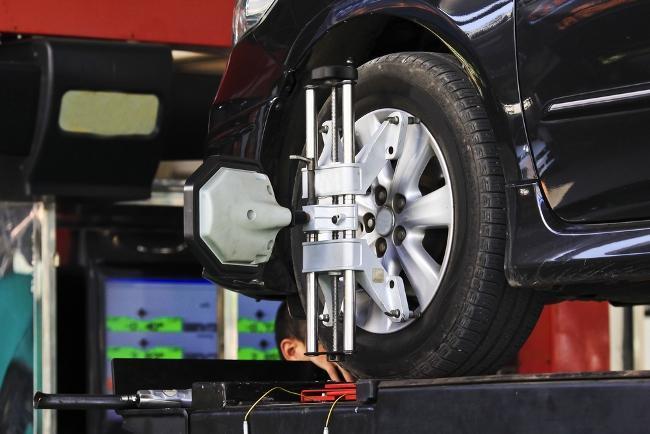 It sounds a little incomprehensible, but in reality everything is simple: if it is positive, then the planes of rotation of the wheels intersect in front of the car as if “converging towards” each other, if it is negative, somewhere behind (divergence).
It sounds a little incomprehensible, but in reality everything is simple: if it is positive, then the planes of rotation of the wheels intersect in front of the car as if “converging towards” each other, if it is negative, somewhere behind (divergence).
Positive convergence (on the left) is precisely the convergence of the wheels towards each other in front of the car
Caster (sometimes called caster) from English. Caster angle (caster angle) is the angle formed by the vertical and the projection of the axis of rotation of the wheel on the longitudinal plane of the car. With a positive caster, the axis of rotation of the wheel is tilted back relative to the direction of movement, and with a negative one, on the contrary, it “looks forward”.
Negative caster (left) causes the strut to tilt forward
Let's start with the collapse.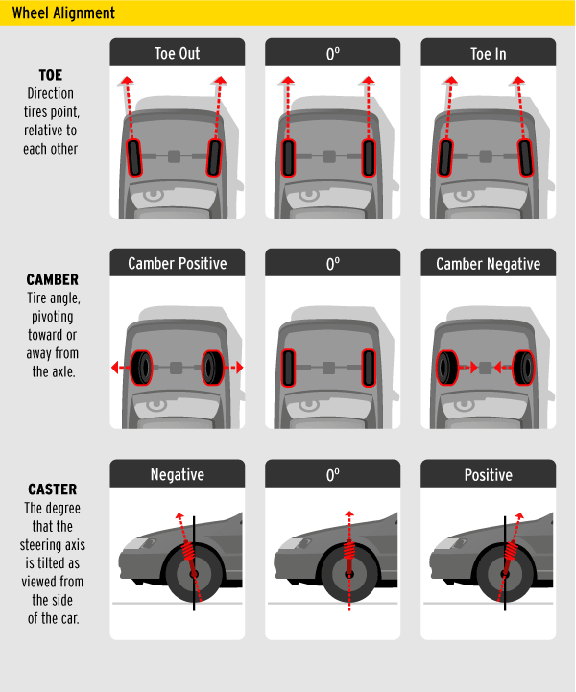 With its near-zero values, the car is most stable as long as it drives in a straight line. And only if the suspension is stiff enough: it’s not just that on old cars the wheels had positive camber, that is, a “house on the contrary”, which to some extent compensated for the softness of the shock absorbers and the instability of the corners under load.
With its near-zero values, the car is most stable as long as it drives in a straight line. And only if the suspension is stiff enough: it’s not just that on old cars the wheels had positive camber, that is, a “house on the contrary”, which to some extent compensated for the softness of the shock absorbers and the instability of the corners under load.
However, over time, the designers began to move away from positive camber towards negative values (however, they still do not fill up the wheels by several degrees, as they do in motorsport). This improved the stability of the car in corners, since the wheel "does not break" and clings to the road better due to the larger contact patch.
House camber improves vehicle stability when cornering at high speeds
Stance, baby: pronounced negative camber is an essential attribute of some automotive subcultures
accelerated wear of the inner tracks of the tires. That is why, unlike athletes, both car designers and ordinary car dealers prefer near-zero values.
That is why, unlike athletes, both car designers and ordinary car dealers prefer near-zero values.
However, depending on the design and kinematics of the suspension, the stiffness of the elastic elements, track width, wheel offset and many other factors, the wheel alignment angles on different machines differ markedly. Moreover, they can vary even within the same model, depending on the type of suspension (regular or sports) and tire size.
On many modern front-wheel drive vehicles, the camber angles of the front wheels are set constructively, and the caster (the angle of the longitudinal inclination of the rack) is not adjustable, so the whole setting comes down to checking and adjusting the toe.
However, this was not always the case - on the same "eight" with which all the other cars of this platform grew up, not only the toe-in, but also the caster were regulated. It is interesting that the tolerances at the same time were quite large, and when adjusting, the repairmen did not always change all the angles, preferring in many cases not to touch the caster - they say, there was a lot of fuss and not much sense.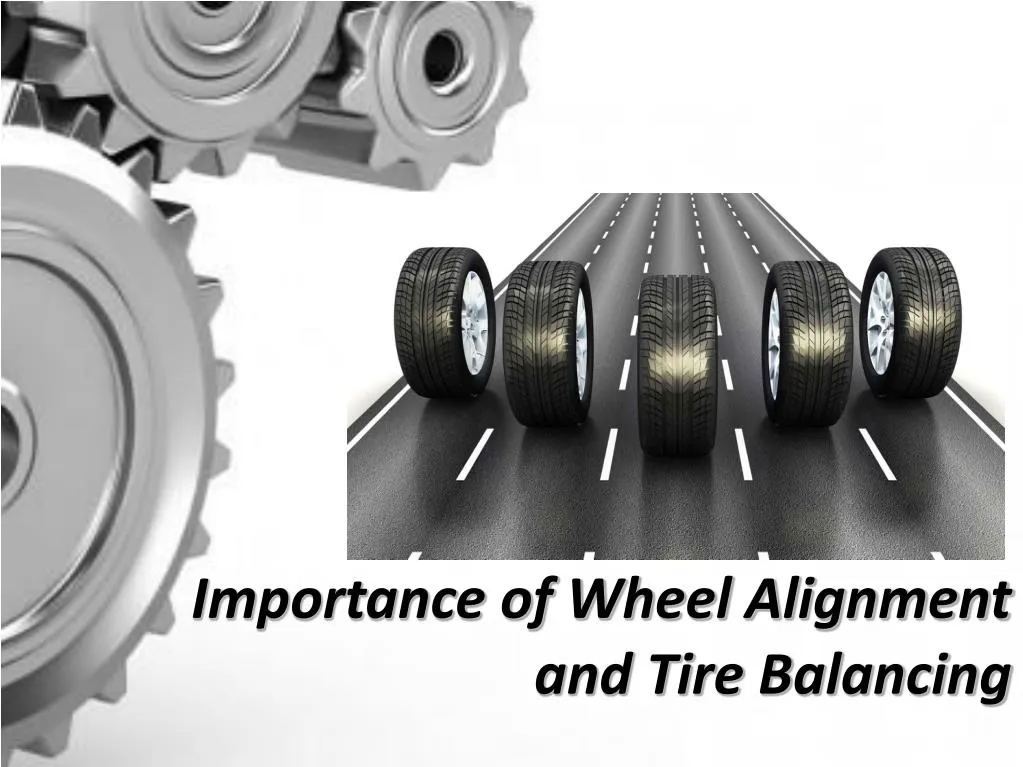
The factory settings for the Samara angles are as follows: front camber = 0°±30', toe-in = 0°15' ± 10' and caster = 0°20±30'0. As you can see, the tolerances are really quite large - according to factory standards, the camber can “walk” within one degree, and a caster of fifty “plus” minutes has the legal right to “go into minus”.
VAZ-2108 front suspension - classic MacPherson strut without subframewithout subframeThe tolerances of the manufacturer in Samara are quite large, so the "average" result of visiting the booth looks something like this. As you can see, all the parameters fit into the "green" range
The situation with the caster is no less interesting. A little higher, we remembered that at a zero angle of inclination, the rack stands strictly vertically - that is, the wheel with the hub does not move anywhere relative to the vertical. With negative caster, the strut at the top seems to lean forward, and the wheel, accordingly, goes back. If positive, vice versa.
With negative caster, the strut at the top seems to lean forward, and the wheel, accordingly, goes back. If positive, vice versa.
On front-wheel drive VAZs, for example, the caster parameter is changed using shims that are placed under the front suspension elements - trailing arm brackets (stretch marks).
Caster in Samara is set using several washers Longitudinal braces of the VAZ-2108 suspension are attached to the brackets in the front, and to the transverse levers in the back. That is why they affect the caster
By removing the washers, the rack can be “filled up” back within a degree, and the wheel, on the contrary, can be shifted relative to the center of the arch towards the front bumper. In reality, however, the reverse picture is usually observed - on many “older” Samaras, “tens”, Priory and Kalina, the wheel “leaves” towards the front door due to impacts and fatigue of the metal, and it is far from always possible to return it to its place, even if you remove all the washers.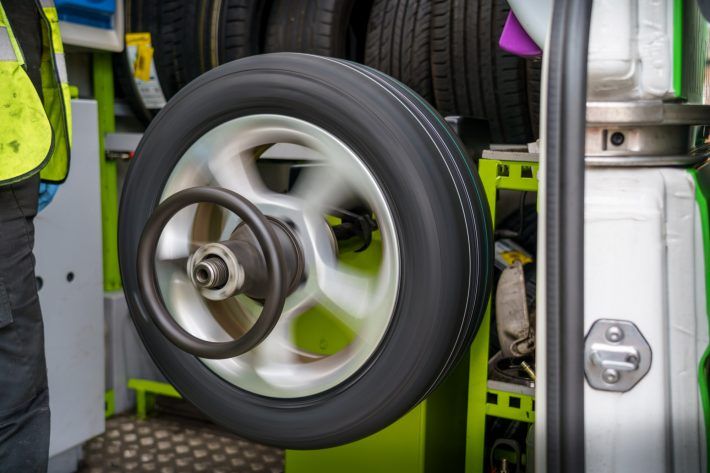
The greater the angle of inclination of the rack, the more stable the front-wheel drive (and not only) car behaves at high speeds. Positive caster results in less car wobble, making it less sensitive to ruts and bumps.
Caster is important not only for its direct effect on the speed of the car, but also because it affects the toe and camber angles, which change depending on the inclination of the rack. Therefore, it is necessary to start adjusting the angles of the front wheels from the caster. This is followed by camber adjustment, and last but not least, it is necessary to adjust the convergence, remembering the interconnection of these parameters with each other.
When changing the caster, it is necessary to unwind the longitudinal stretching of the suspension. It takes time and effort - especially if the car is old
It takes time and effort - especially if the car is old Usually, the choice of wheel alignment angles from the allowable range is the prerogative of the camber itself. And this is not always good, since many of them, having been doing their work for years, are guided by some internal stereotypes, which often contradict theory, but in practice lead to a deterioration in the driving performance of the car and premature tire wear. Therefore, the final printout figures should be treated with great attention, and in some cases, do not hesitate to give recommendations.
What is the angle of the stand if it is adjustable? On a standard suspension and with a "normal" driving style - the maximum allowable positive, that is, 0 ° 50 'for the front-wheel drive Samara, and on other front-wheel drive it is better to set the caster "more plus" - within tolerances, and if this parameter is configured, of course . This will provide the car with better directional stability at high speeds and will lead to “self-stabilization” of the steering wheel in the near-zero position.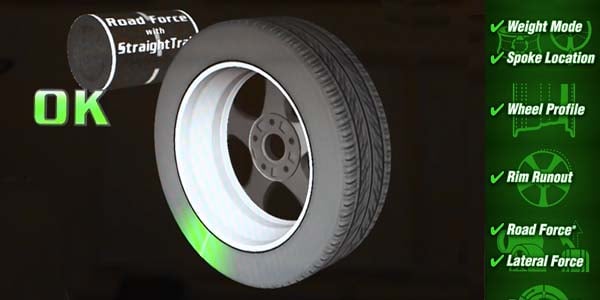 A slight deviation from factory tolerances is also acceptable - for example, increasing the caster to one degree (60-65').
A slight deviation from factory tolerances is also acceptable - for example, increasing the caster to one degree (60-65').
True, for a "clear zero" you will have to pay with the fact that in turns the steering wheel will become somewhat heavier (there is no amplifier!) And will try to return to its previous position more sharply. However, you can get used to such a new feature of the machine in just a few minutes.
As for the camber, other "urban racers" often "fall apart" the front wheels to one degree or more. However, at the same time, the car will become more “nervous” and sensitive to the slope of the road, due to which the steering wheel can literally “tear out of hand” (especially on large and wide wheels!). Another payment for "sporting ambitions" is the premature wear of the inner tracks - the tires are worth a "house"!
The camber of the front wheels in Samara is adjusted using an eccentric bolt (position 3 in the figure) on the bodies of the front shock absorbers 10' per side.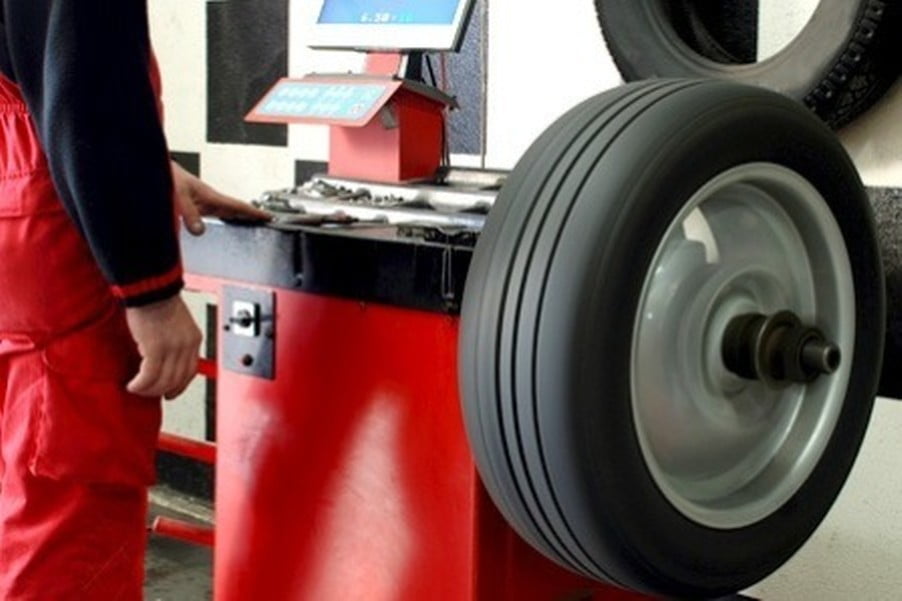 True, it is not so easy to set this parameter with such jewelry accuracy on a Soviet-Russian car, and not all masters agree to spend their working time on such fun.
True, it is not so easy to set this parameter with such jewelry accuracy on a Soviet-Russian car, and not all masters agree to spend their working time on such fun.
Adjusting the toe in Samara is a rather troublesome process (especially on the driver's side), so some razvalnikov even make such a special tool on their own (!)
even with a small load on the car (driver and passenger), it begins to change for about 5-7 minutes, and in which direction (plus or minus) depends on the position of the “mustache” of the steering rack on a particular car.
Notice how the toe and camber angles change at partial load! (the first photo is on an empty car, the second is with a driver weighing 65 kg)
Before adjusting the toe-in, the steering wheel must be set strictly horizontally and fixed, for which special devices are used at the service station
In most cases, it is recommended to check the wheel alignment at least once every 30,000 km and immediately after the car hit a large pit with a wheel or became a member of even a small accident. After all, both the first and the second can lead to a displacement of the suspension elements, which will violate the parameters of convergence, caster or camber.
After all, both the first and the second can lead to a displacement of the suspension elements, which will violate the parameters of convergence, caster or camber.
What happens if they are not done at all? Nothing good, of course. At a minimum, the car will behave worse both in a straight line and in corners, because the deviation of any of the parameters affects both the stability of the car and its handling. Secondly, off corners will cause the car to pull to the side, so the driver will have to hold the steering wheel with more force in order to maintain a straight line.
When the left wheel toe is so knocked down (parameter highlighted in red), the car drives “somehow strange”, constantly roaming along the road, and the steering wheel simply does not return back! If everything is left as is, then the tread will last for literally a couple of thousand kilometers. It happens that the car does not just pull to the left or right, but when moving, it “prowls” all the time, deviating back and forth from a straight path. In addition to the fact that driving such a car will not be very pleasant, the owner will very quickly find that the wheels on the axle where the wheel alignment is violated wear out very unevenly and very prematurely.
In addition to the fact that driving such a car will not be very pleasant, the owner will very quickly find that the wheels on the axle where the wheel alignment is violated wear out very unevenly and very prematurely.
There are cases when, due to an incorrect “camber”, the projector of an almost new tire literally “melted before our eyes”, disappearing in just 10-15 thousand kilometers!
Not always even a qualified specialist on a properly adjusted stand (and this is very important!) will be able to set the wheel alignment angles within the tolerances specified by the manufacturer. This is usually prevented by worn suspension parts, in which noticeable backlash has occurred. Catching minutes where, during movement, the details “walk” by whole degrees is a rather pointless exercise. Therefore, an experienced "breakdown" usually begins with a primary (that is, "rough") diagnostics of the chassis, carefully examining the rubber-metal elements and checking them for mutual movement. In many cases, before entering the wheel alignment stand, it is necessary to visit a general repair station to replace worn suspension parts. And only by “shaking up the hodovka” you can try to achieve the required wheel alignment angles.
In many cases, before entering the wheel alignment stand, it is necessary to visit a general repair station to replace worn suspension parts. And only by “shaking up the hodovka” you can try to achieve the required wheel alignment angles.
It happens that the suspension is in order, but it still fails to set the toe, camber or caster. The reason is the irreversible deformation of the body, which happens after a severe accident or due to corrosion of power elements. And if in the first case, at least theoretically, a slipway can help, then on a strong “rotten” car, the problem cannot be solved with little bloodshed, and a big one does not make sense.
Sometimes even after the corners are set correctly, the car still pulls to the side. In this case, you need to try to rearrange the wheels in some places (or better, change the suspicious pair), because often due to the deformation of the carcass or the heterogeneity of the layers of the breaker, the tire becomes “curved”
Poll
How long have you been doing wheel alignment?
Your vote
Total votes:
practice
Articles / Practice Stop on demand: what breaks in the brake master cylinder Everyone used to know what a master brake cylinder (or just a GTZ) is. Now they remember him much less often: the GTZ has noticeably increased reliability, and on new machines it practically does not fail .... 401 0 one 10/14/2022
Articles / Travel Air sellers: how cunning businessmen make money in lines at the borders The past two weeks have been marked by huge queues of cars at the borders of Russia and neighboring countries.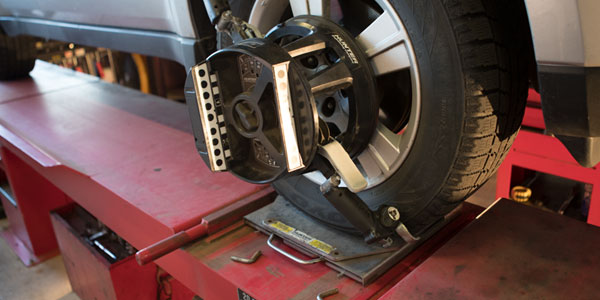 And where there are queues, difficulties and excitement, there are always those who want to catch... 610 0 5 10/14/2022
And where there are queues, difficulties and excitement, there are always those who want to catch... 610 0 5 10/14/2022
Articles / Used cars Range Rover Evoque I with mileage: durable suspension, the right oil and no Ford engines We have already praised the Range Rover Evoque for its stainless body, scolded the unimportant multimedia and blamed the models for capricious electrics. It's time to figure out which motors to avoid... 1983 0 2 10/13/2022
Test drives / Test drive Haval Dargo vs Mitsubishi Outlander: the dog is barking, the stranger is coming In the Haval dealership in the south of Moscow, life is in full swing: buyers look at cars, communicate with managers and sign some papers.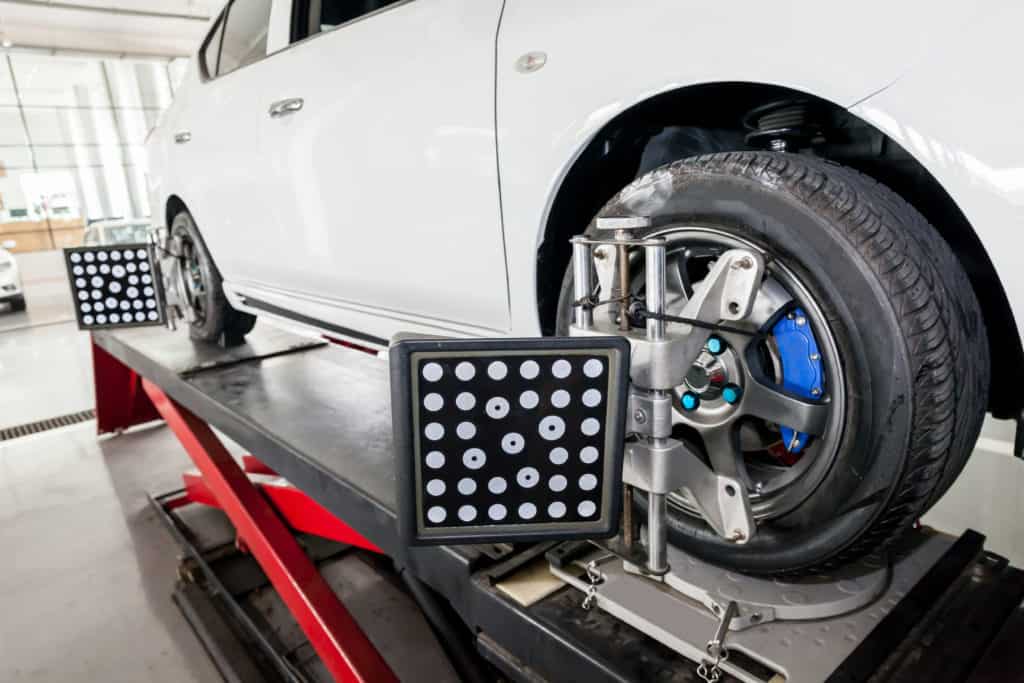 While I was waiting for the test Dargo, the same cross... 13490 7 175 13.09.2022
While I was waiting for the test Dargo, the same cross... 13490 7 175 13.09.2022
Test drives / Test drive Motor from Mercedes, emblem from Renault, assembly from Dacia: test drive of the European Logan 1.0 It would seem that what's new can be told about the second generation Renault Logan, known to every Russian taxi driver, as they say, up and down? However, this car has... 11704 ten 41 08/13/2022
Test drives / Test drive Geely Coolray vs Haval Jolion: Free Cheese? If! Do you want to buy a car today with a full warranty, on credit at an adequate rate, without wild dealer markups? Now this is still a task, because a full-fledged chain of "representation - s.